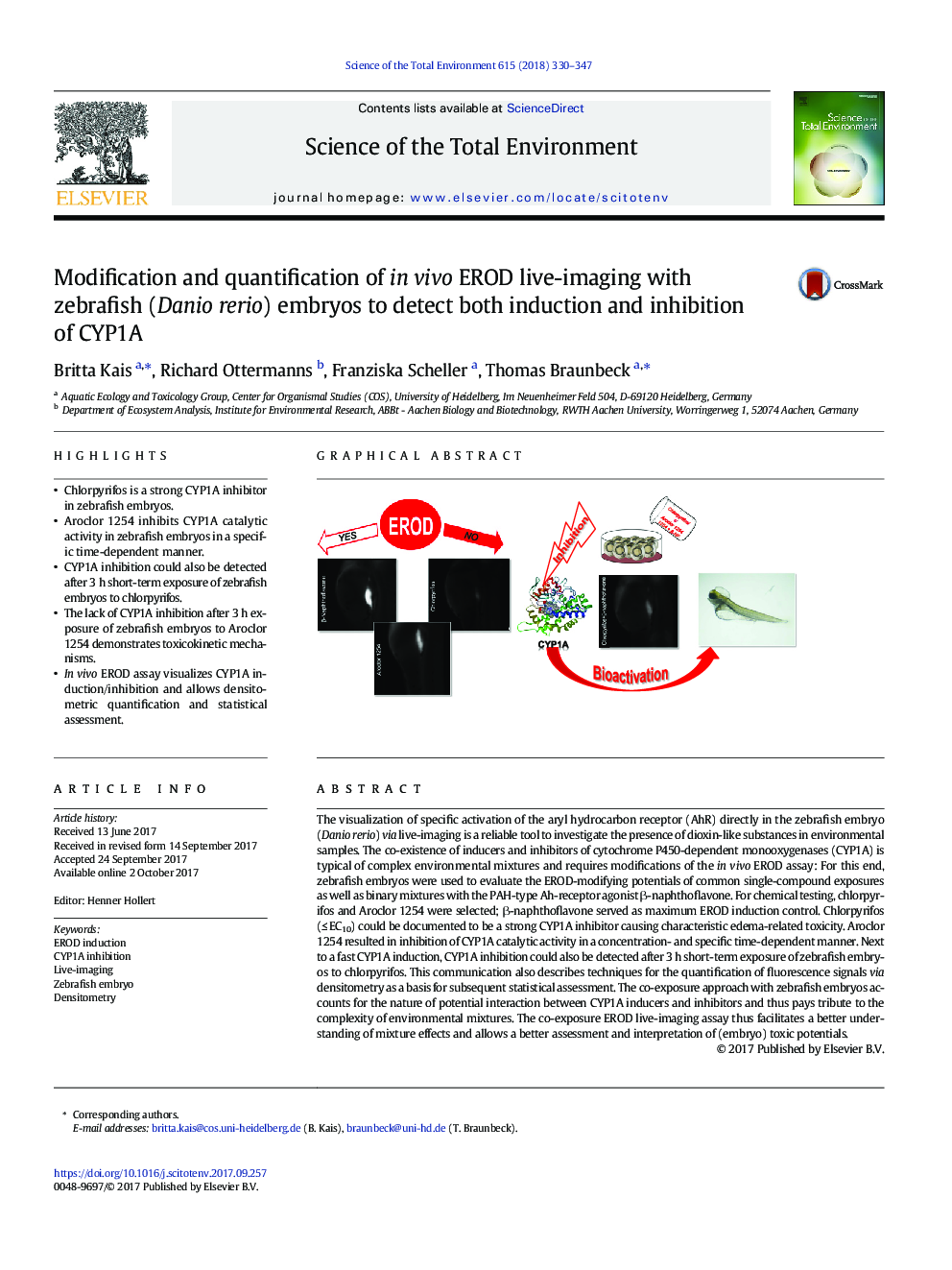| کد مقاله | کد نشریه | سال انتشار | مقاله انگلیسی | نسخه تمام متن |
|---|---|---|---|---|
| 5749787 | 1619689 | 2018 | 18 صفحه PDF | دانلود رایگان |

- Chlorpyrifos is a strong CYP1A inhibitor in zebrafish embryos.
- Aroclor 1254 inhibits CYP1A catalytic activity in zebrafish embryos in a specific time-dependent manner.
- CYP1A inhibition could also be detected after 3 h short-term exposure of zebrafish embryos to chlorpyrifos.
- The lack of CYP1A inhibition after 3Â h exposure of zebrafish embryos to Aroclor 1254 demonstrates toxicokinetic mechanisms.
- In vivo EROD assay visualizes CYP1A induction/inhibition and allows densitometric quantification and statistical assessment.
The visualization of specific activation of the aryl hydrocarbon receptor (AhR) directly in the zebrafish embryo (Danio rerio) via live-imaging is a reliable tool to investigate the presence of dioxin-like substances in environmental samples. The co-existence of inducers and inhibitors of cytochrome P450-dependent monooxygenases (CYP1A) is typical of complex environmental mixtures and requires modifications of the in vivo EROD assay: For this end, zebrafish embryos were used to evaluate the EROD-modifying potentials of common single-compound exposures as well as binary mixtures with the PAH-type Ah-receptor agonist β-naphthoflavone. For chemical testing, chlorpyrifos and Aroclor 1254 were selected; β-naphthoflavone served as maximum EROD induction control. Chlorpyrifos (â¤Â EC10) could be documented to be a strong CYP1A inhibitor causing characteristic edema-related toxicity. Aroclor 1254 resulted in inhibition of CYP1A catalytic activity in a concentration- and specific time-dependent manner. Next to a fast CYP1A induction, CYP1A inhibition could also be detected after 3 h short-term exposure of zebrafish embryos to chlorpyrifos. This communication also describes techniques for the quantification of fluorescence signals via densitometry as a basis for subsequent statistical assessment. The co-exposure approach with zebrafish embryos accounts for the nature of potential interaction between CYP1A inducers and inhibitors and thus pays tribute to the complexity of environmental mixtures. The co-exposure EROD live-imaging assay thus facilitates a better understanding of mixture effects and allows a better assessment and interpretation of (embryo) toxic potentials.
242
Journal: Science of The Total Environment - Volume 615, 15 February 2018, Pages 330-347